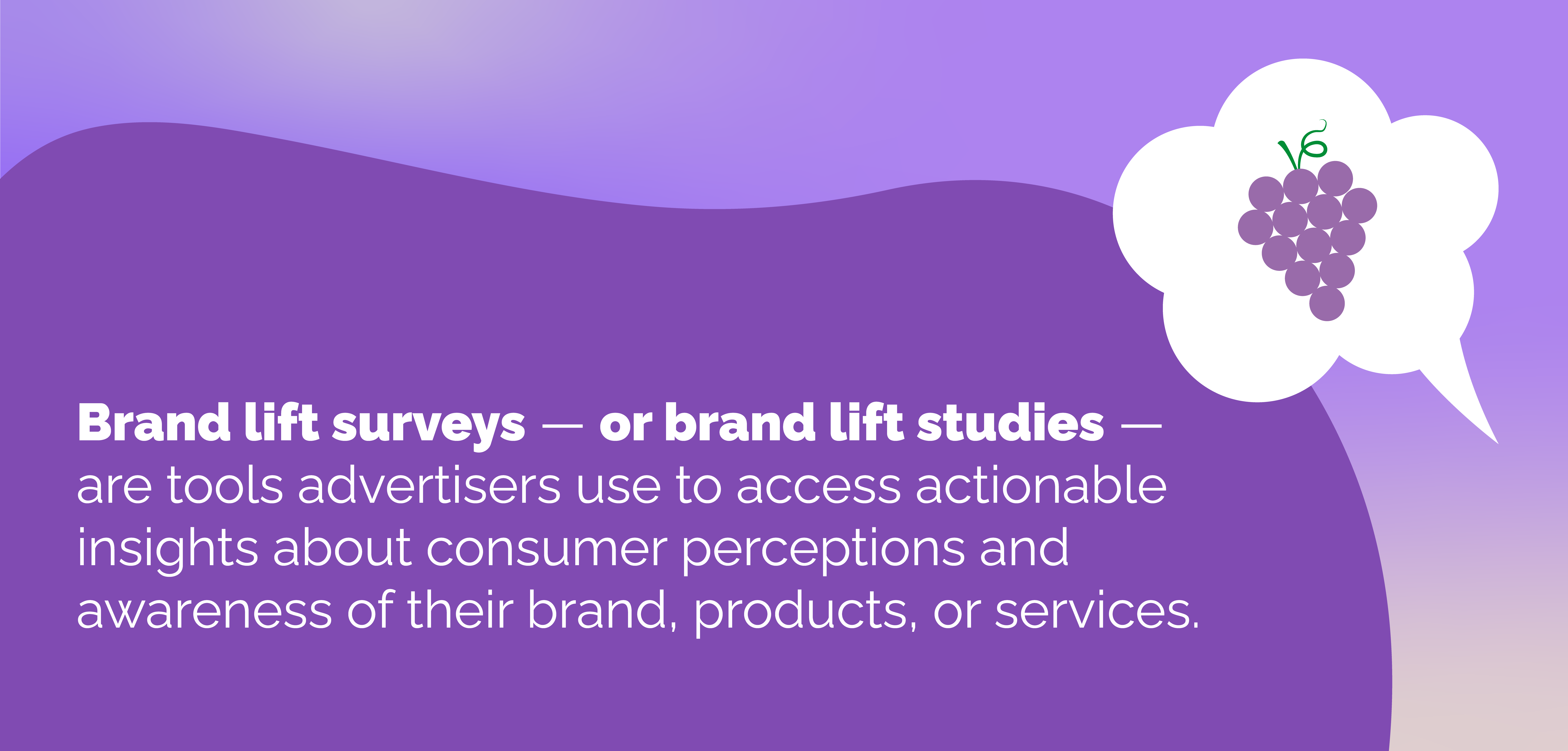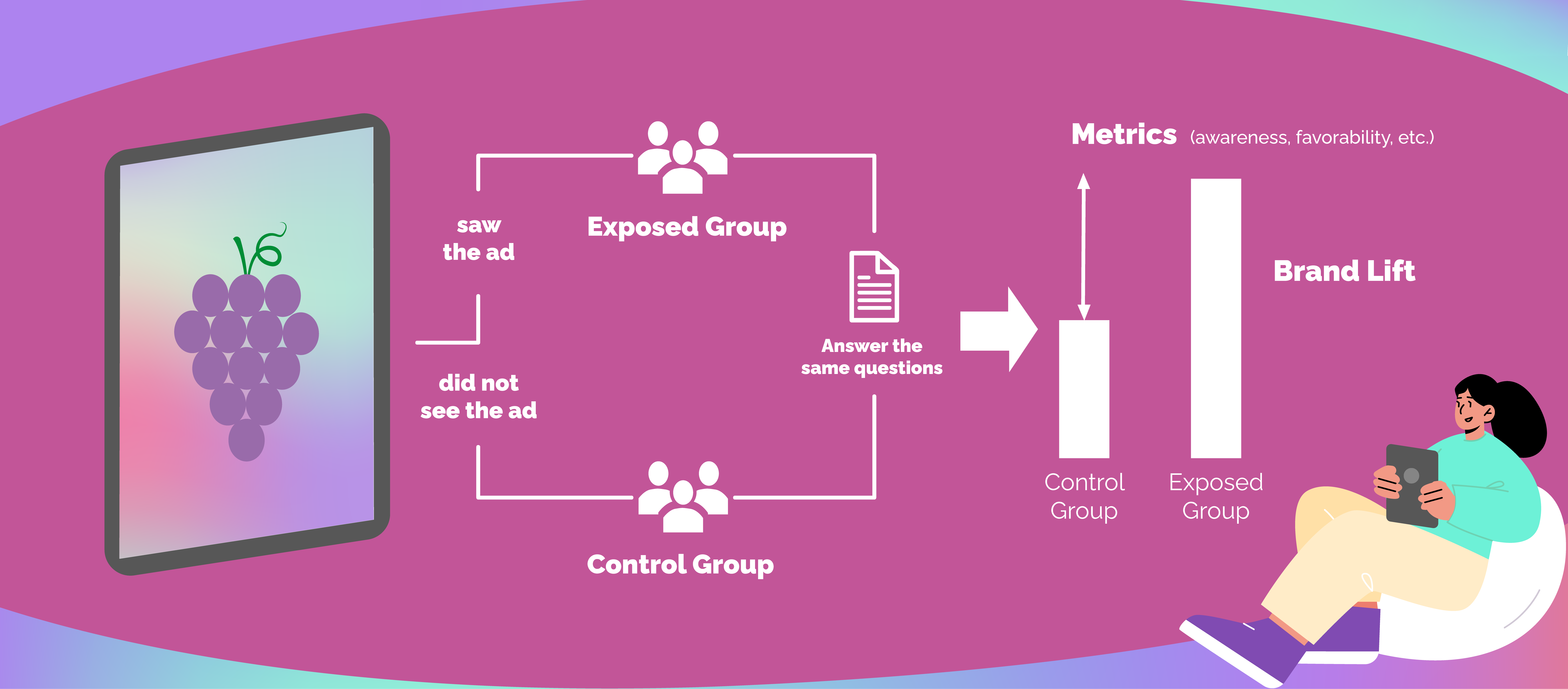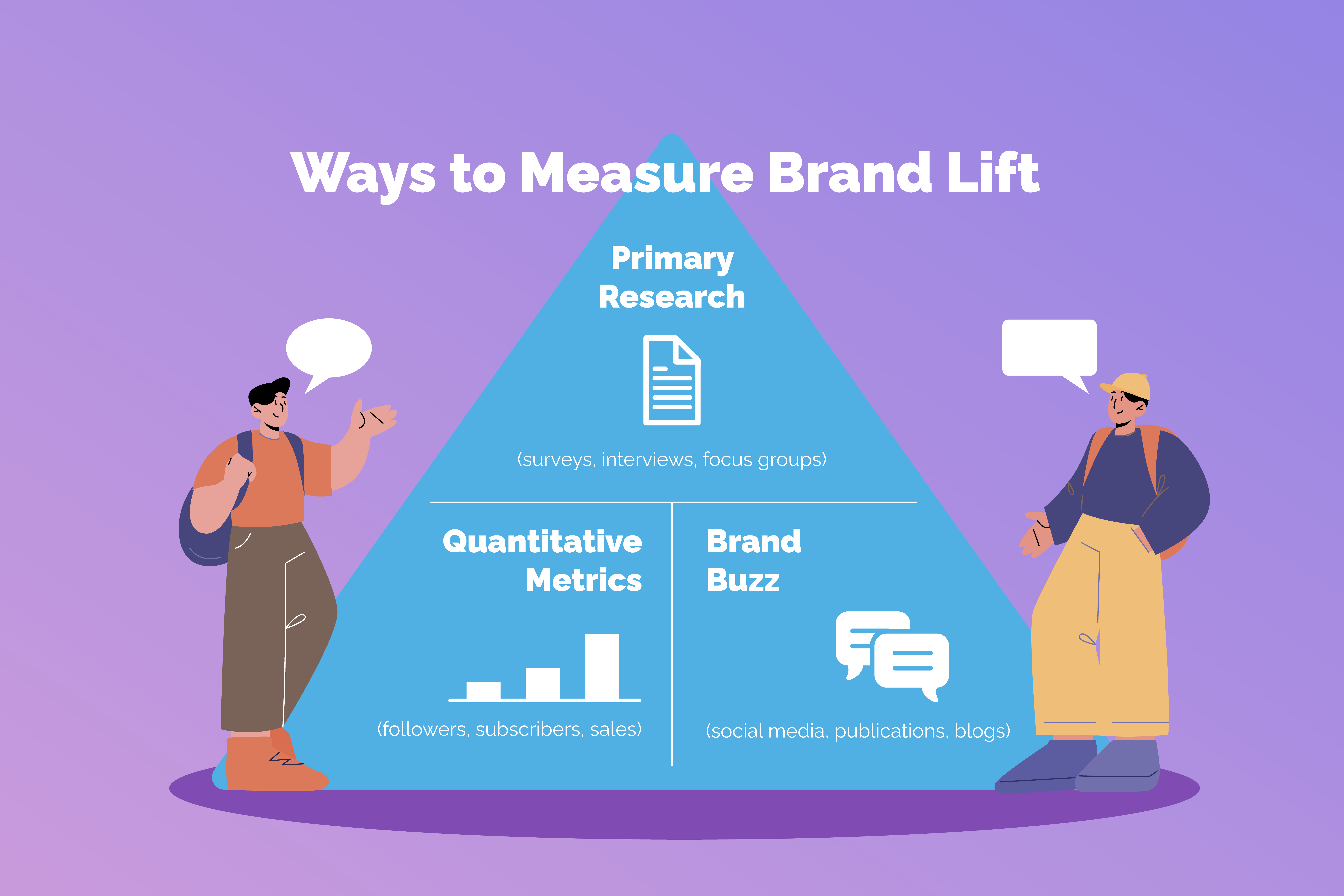Measuring the success of any digital marketing campaign requires reliable, testable metrics. Ad campaigns can have a number of purposes, including raising brand awareness and lifting brand perception — both of which can help to move prospective customers down the funnel.
Therefore, it’s essential to plan your ad campaigns strategically to align them with your brand’s core values and business objectives — this will help you establish your brand as a leader in its sector.
Brand lift surveys — or brand lift studies — are tools advertisers use to access actionable insights about consumer perceptions and awareness of their brand, products, or services.

They provide information about campaign success by measuring brand lift — the measurable increase in consumer perception of a brand as a direct result of a marketing campaign.
Today, we’ll walk you through the main features of a brand lift survey and share our ten-step process for creating and using them effectively.
What Is Brand Lift?
Brand lift is an increase in brand engagement that comes as the result of an ad campaign. Although it doesn’t guarantee increased conversions, it’s a great way to boost your brand’s presence and improve engagement.
What Is a Brand Lift Survey?
A brand lift survey measures the direct impact of ads on consumer awareness, perception, consideration, and intent to purchase a company’s products or services.
They are typically conducted before, during, and after an advertising campaign to measure the difference in metrics and gauge campaign effectiveness beyond just clicks or conversions.
While brand lift surveys provide valuable insights into the effectiveness of advertising campaigns in influencing brand metrics, they should be used in conjunction with other performance metrics (like click-through rates and conversions) for a holistic understanding of campaign performance.
Most brands conduct their brand lift surveys online by serving them to two groups: the control group and the exposed group. The control group hasn’t seen the ad, and the exposed group has; by comparing their responses, advertisers can determine the impact of their campaign.

Depending on the goals of the campaign, a brand lift survey might measure:
- Brand awareness: whether consumers know about the brand.
- Brand perception: how consumers feel about the brand.
- Brand consideration: whether consumers would consider purchasing the brand’s products or services.
- Ad recall: whether consumers remember seeing a specific ad.
- Purchase intent: Whether consumers intend to buy the brand’s products or services in the near future.
What Are the Benefits of Brand Lift Surveys?
Brand lift studies can complement your other strategies for measuring campaign impact in a number of ways, including:
- Quantifiable Impact: They provide a clear metric to understand campaign effectiveness in terms of brand-related goals.
- Optimization: Insights from brand lift surveys can help advertisers optimize their campaigns in real time and adjust messaging, targeting, or creative elements to improve results.
- Budget Allocation: By understanding which campaigns or platforms deliver the highest brand lift, advertisers can allocate their budgets more effectively.
Ways to Measure Brand Lift
Before we dive into the steps you’ll need to take to carry out your brand lift survey, it’s important to understand the different metrics used for brand lift measurement and what they can tell you about your ad campaign.
They include:
- Primary research
- Quantitative metrics
- Brand buzz
Let’s take a look at what each one entails.

Primary Research
Primary research includes surveys, interviews, and focus groups that aim to discover how an ad campaign has impacted brand perception, brand favorability, brand recall, and intent to purchase.
The questions in primary research tend to focus on the brand and its products. This helps the advertiser determine which aspects of the campaign have had the biggest impact on brand lift and continue to focus on those aspects in future campaigns.
Quantitative Metrics
Quantitative metrics are benchmarks the advertiser sets and measures before and after the campaign has run.
The metrics you choose will depend on your campaign goals, but they may include measurements such as social media followers, newsletter subscribers, or even the number of people visiting your physical store.
By measuring these metrics before and after the campaign, you can assess its effectiveness in lifting your brand.
Brand Buzz
Brand buzz refers to the conversations people are having about your brand — for instance, on social media, news publications, and blogs.
Use tools such as Google Alerts, Hootsuite, and Ahrefs to monitor these conversations and measure any shifts in brand buzz before and after your campaign.
How to Carry Out a Brand Lift Survey in 10 Steps
Ready to conduct your first brand lift survey? Here’s our step-by-step guide:
Step 1: Define Your Objectives
Start by deciding what your brand awareness goals are for your campaign — this will help you determine which metrics to measure, such as:
- Brand awareness
- Ad recall
- Brand consideration
- Brand favorability
- Purchase intent
- Brand buzz
- Sales
- Footfall traffic
Once you’ve decided what to measure, you’ll need to design questions that will gauge these metrics.
Step 2: Choose Your Audience
You’ll need to select a control group — a subset of your target audience that won’t see the ad — whose responses will provide a baseline.
You’ll also need to choose an exposed group, or the ones who will see the ad. By comparing their responses, you’ll be able to get a good idea of your ad’s impact.
When selecting your audience, it’s crucial to remember that the control and exposed groups should ideally be composed of individuals with similar behavioral characteristics. In other words, you don’t want to select two drastically different behavioral audiences.
Step 3: Design the Survey
The shorter the survey, the better the completion rates will be, so aim to limit it to no more than three to five questions.
Use a mix of multiple-choice, Likert scale, and open-ended questions, and ensure questions are clear, unbiased, and directly related to your objectives.
Step 4: Choose a Platform
Many digital advertising platforms — such as Google, Facebook, and YouTube — offer integrated brand lift studies.
Alternatively, you can use tools like SurveyMonkey, Qualtrics, Typeform, or Nielsen to distribute your survey.
Step 5: Launch Your Campaign and Survey
While running your advertising campaign, serve your survey to both the control and exposed groups, ensuring the control group remains unexposed to the ad.
Step 6: Collect the Data
It’s essential to allow enough time to collect your data. The duration will depend on campaign length and the sample size you need for statistically significant results. That said, the bare minimum should be two months, and the longer the duration, the better.
Step 7: Analyze the Results
To analyze the results of your brand survey, you’ll need to compare the responses of the exposed group to the control group.
Calculating the percentage difference in responses between the two groups will determine the amount of “lift” caused by the ad.
For instance, if 60% of the exposed group recalls the ad compared to 40% of the control group, there’s a 20% brand lift in ad recall.
Step 8: Draw Insights and Optimize
Analyze the results of your brand survey to understand which aspects of your campaign had the greatest impact. You can then use these insights to optimize ongoing or future campaigns.
For example, if brand awareness increased but purchase intent didn’t, you might need to adjust your call-to-action or offer.
Step 9: Report and Share Findings
Distill your findings into a comprehensive report detailing the survey methodology, results, insights, and recommendations. Share them with all stakeholders and teams involved in the campaign.
Step 10: Iterate
Use the insights from your brand lift survey to inform and improve future campaigns. Continue to regularly conduct brand lift surveys to continuously monitor and optimize brand performance over time.
Understand Campaign Performance with Brand Lift Surveys
With their ability to provide insights into campaign performance that go beyond impressions, clicks, and conversions, brand lift surveys are a valuable tool in any advertiser’s toolkit.
If you’re looking for more information on how to measure campaign performance effectively, check out this guide to the new data-driven attribution model.

